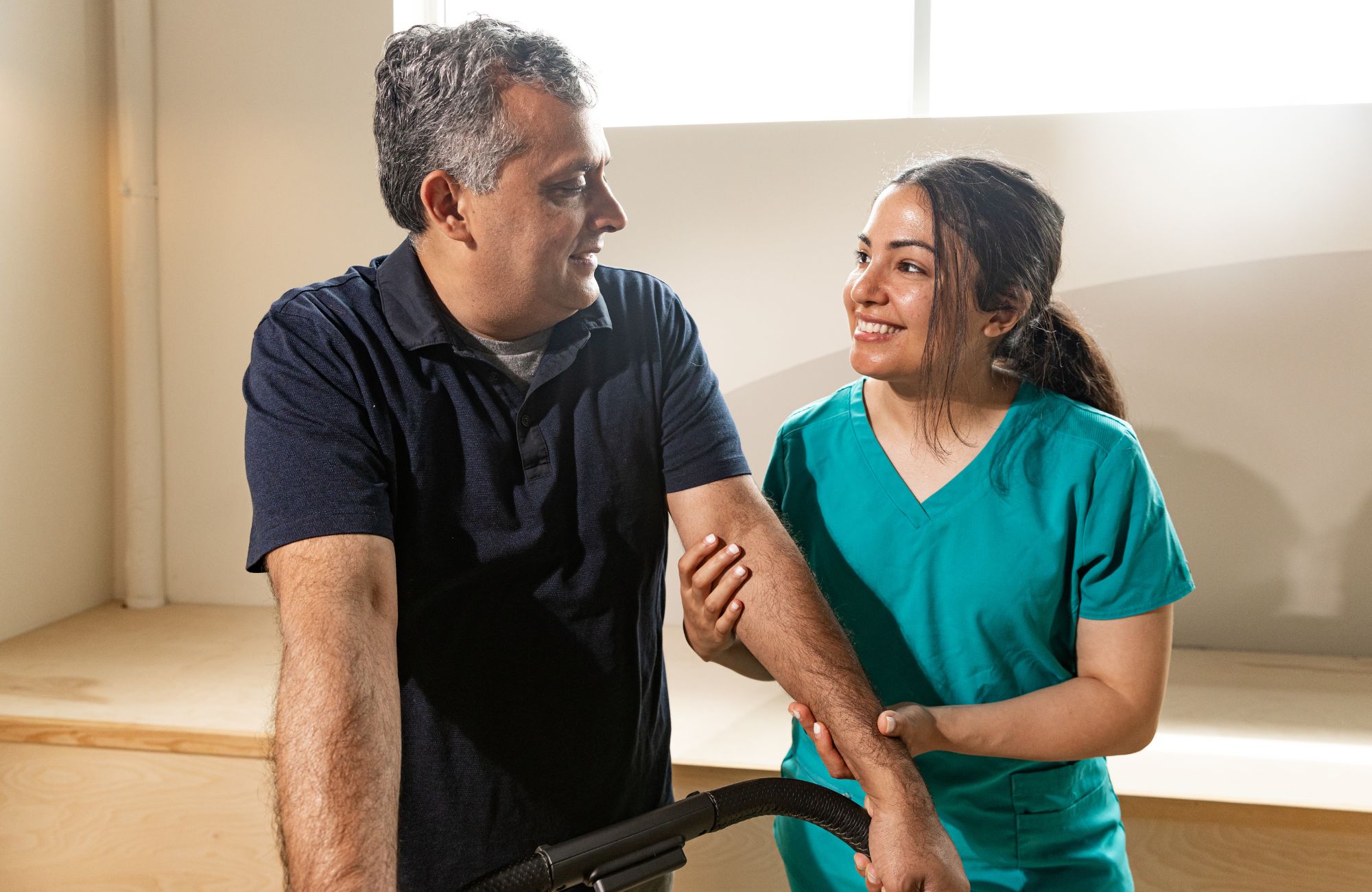


The Doctorate of Physical Therapy (DPT) degree is the entry-level qualification for becoming a licensed physical therapist. If you’re interested in helping people improve their mobility, alleviate pain, and enhance their quality of life, pursuing a DPT may be the right career path for you. This comprehensive guide will provide a clear overview of what a DPT is, the education and training involved, and how to navigate the admissions process and licensure requirements.
The DPT is the culmination of a rigorous physical therapy program designed to prepare students for clinical practice.
A Doctor of Physical Therapy (DPT) is a clinical doctorate required to practice physical therapy in the United States. It is an advanced degree and a comprehensive academic program that provides the necessary education and training to become a physical therapist. The DPT program typically includes coursework in physical therapy education, clinical experiences, and a significant amount of hands-on training to ensure students develop the clinical reasoning and clinical education experience needed to practice physical therapy services in various healthcare settings.
The DPT program is a specialized path that focuses on areas like musculoskeletal dysfunction, acute care physical therapy, cardiopulmonary physical therapy, and geriatric physical therapy, among others. The curriculum is designed to ensure that physical therapy students are equipped with the skills to assess, treat, and rehabilitate individuals with physical impairments. In addition to clinical reasoning, the development of critical thinking is emphasized as essential for achieving clinical excellence in physical therapy practice. The DPT program prepares students for professional practice in diverse healthcare environments.
A DPT program typically takes about three years to complete, with the first two years focusing on coursework, followed by clinical rotations in real healthcare settings. The curriculum includes clinical components that provide hands-on training through practical experiences and real-world patient care, integrated throughout different years of the program. Students must also demonstrate essential functions, including physical, cognitive, and procedural skills, to succeed in both academic and clinical settings.
The clinical education component of the DPT program ensures you gain firsthand experience treating patients in different settings, including diverse clinical settings. This may include:
Throughout your clinical rotations, you’ll develop clinical expertise by applying evidence-based practice and refining your clinical reasoning skills. All clinical education experiences are supervised by licensed physical therapists to ensure quality training.
Entering a DPT program requires meeting specific academic and experiential requirements. Here’s a breakdown of what you can expect during the admissions process. Successful completion of all program requirements is necessary for graduation and licensure.
Applicants should consult the DPT student handbook for detailed admissions policies and program guidelines.
Most DPT programs require applicants to have a bachelor’s degree from a regionally accredited college, typically in a related field such as biology, health sciences, or kinesiology. Applicants may apply before completing their bachelor’s degree, but cannot begin the program until the degree is conferred. Some programs may have additional requirements, such as completing prerequisite courses like human anatomy and exercise physiology.
Most programs expect a minimum GPA of 3.0, though competitive programs may require higher grades. A strong academic record, especially in science courses, will improve your chances of acceptance.
Some programs require the Graduate Record Examination (GRE), while others do not. For most DPT programs, GRE scores are not required, but you should check the specific requirements for the programs you’re interested in.
Many programs require you to have clinical experience before applying. This can include volunteer work or paid positions in physical therapy clinics or other healthcare settings. Some programs may also require a certain number of clinical hours. The program does not discriminate on the basis of sexual orientation or other protected characteristics.
The admissions process for a DPT program generally involves submitting an application that includes:
Once you’ve completed the necessary coursework and clinical experiences, the next step is to become a licensed physical therapist. Upon completion, you will earn a physical therapy degree, which is required to pursue licensure and professional practice. This involves passing the National Physical Therapy Exam (NPTE).
DPT graduates are prepared to work as autonomous practitioners within the broader healthcare system, integrating evidence-based practice and clinical reasoning in diverse clinical settings.
The NPTE is a comprehensive test that assesses your knowledge in various areas of physical therapy, including clinical reasoning, musculoskeletal therapy, and patient education. Once you pass the NPTE and meet other state-specific requirements, you will receive your license to practice physical therapy.
As a licensed physical therapist, you will need to engage in lifelong learning to maintain your licensure. This includes staying up-to-date with the latest clinical research, advancements in physical therapy practice, and changes in healthcare regulations. Many states require physical therapists to complete continuing education units (CEUs) as part of the licensure renewal process. The American Physical Therapy Association offers resources and support for continuing education and professional development, making it a valuable organization for those committed to lifelong learning in the field.
Once you’ve earned your Doctorate of Physical Therapy (DPT) and obtained your license, you’ll find numerous career opportunities across various healthcare settings. As a DPT graduate, you will be prepared for the broad scope of physical therapist practice, which includes comprehensive skills and knowledge to manage diverse patient populations and conditions. Here’s a breakdown of where you can work as a licensed physical therapist:
At the end of the section, it’s important to note that DPT students consistently achieve high graduation and licensing pass rates, reflecting the quality of their education and preparation for successful careers.
In physical therapy clinics, you’ll treat a variety of conditions such as musculoskeletal dysfunction, spinal cord injury, and help with differential diagnosis. You’ll work with patients to improve mobility, reduce pain, and enhance their quality of life in an outpatient setting.
In hospitals, you’ll provide rehabilitation for patients recovering from surgeries or injuries, particularly in acute care physical therapy settings. This involves helping patients regain strength and mobility after serious health events like joint replacements or heart surgery.
In sports clinics, you’ll focus on treating athletes recovering from sports-related injuries like sprains, fractures, or tendonitis. Your role will include rehabilitation and injury prevention, helping individuals return to their active lifestyles.
As a home health care physical therapist, you’ll visit patients’ homes to provide therapy, helping them recover from surgeries or manage chronic conditions. This setting offers flexibility and the opportunity to work one-on-one with patients in a comfortable environment.
Physical therapists can choose to specialize in these fields by taking additional courses or certifications after completing their DPT degree.
Earning a DPT can be a significant investment. Tuition fees vary depending on the program and location, but it’s important to plan for the costs of education, including textbooks, fees, and clinical expenses.
For details on scholarships, grants, and other support, students should review the financial aid information provided by their institution or contact the financial aid office for assistance.
Many DPT programs offer scholarships, grants, and loan programs to help cover the cost of tuition. Additionally, some students may be eligible for federal financial assistance or private loans.
Earning a Doctorate of Physical Therapy is a challenging but rewarding journey that prepares you for a career in physical therapy. With a solid DPT curriculum and valuable clinical education experiences, you’ll be equipped to practice physical therapy and make a significant impact on the lives of your patients. If you’re interested in becoming a licensed physical therapist, consider exploring different DPT programs to find the one that best fits your career goals.
At Flagstar Rehab, we specialize in connecting highly qualified physical therapists with top healthcare providers. If you’re ready to take the next step in your physical therapy career, contact us today to learn about job opportunities, career advice, and how we can support you in finding the right fit. Start your journey with Flagstar Rehab and make a difference in the lives of your patients.
A Doctorate of Physical Therapy (DPT) typically takes about three years to complete after earning a bachelor’s degree. This includes coursework in physical therapy education, clinical rotations, and hands-on training in healthcare settings. Some programs may offer accelerated options, but the standard duration is three years.
The highest salary for a Doctor of Physical Therapy (DPT) can vary depending on factors such as specialization, experience, and location. On average, physical therapists earn between $75,000 to $100,000 annually. However, highly specialized fields such as pediatric physical therapy or sports rehabilitation can lead to higher salaries, with top earners making over $120,000 per year.
Yes, a Doctor of Physical Therapy (DPT) is technically called a Doctor. However, it’s important to note that while they hold a doctoral-level degree, a DPT is not a medical doctor (MD). Physical therapists with a DPT degree are trained to diagnose and treat physical impairments but do not perform surgeries or prescribe medications.
A PhD is generally higher than a DPT, focusing on advanced research and new knowledge, often for academia or research careers. A DPT is a clinical degree for practicing physical therapy and treating patients in healthcare settings.